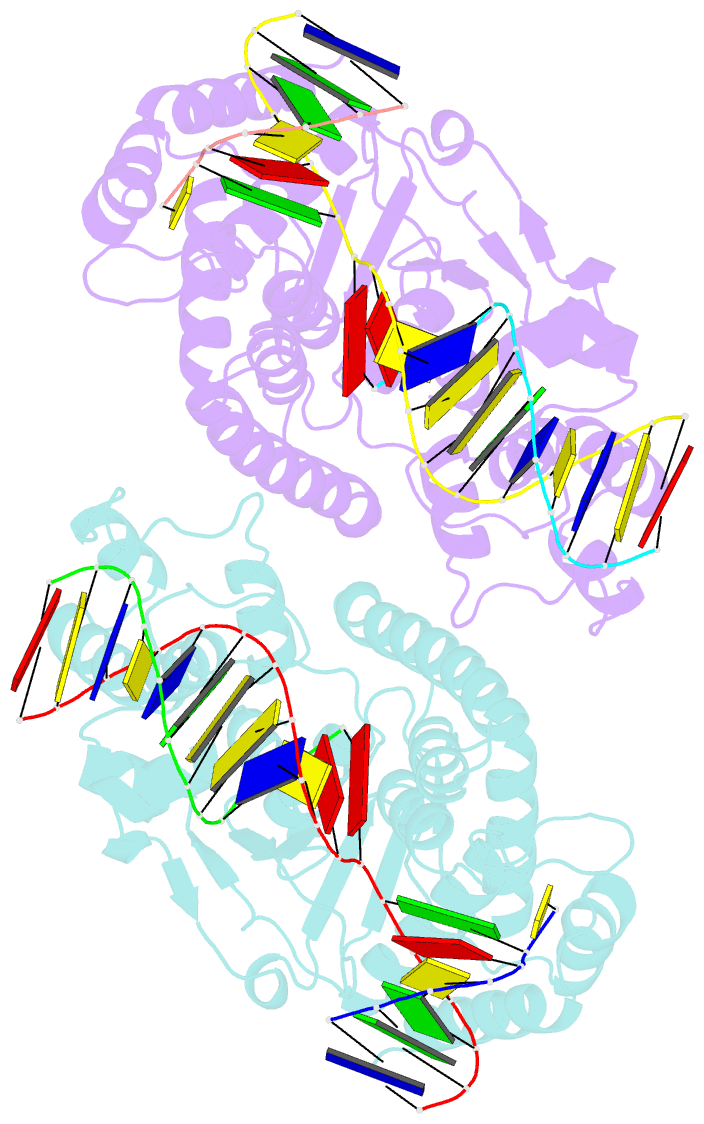Summary information and primary citation
- PDB-id
- 3q8m; SNAP-derived features in text and JSON formats;
DNAproDB
- Class
- hydrolase-DNA
- Method
- X-ray (2.6 Å)
- Summary
- Crystal structure of human flap endonuclease fen1 (d181a) in complex with substrate 5'-flap DNA and k+
- Reference
- Tsutakawa SE, Classen S, Chapados BR, Arvai AS, Finger LD, Guenther G, Tomlinson CG, Thompson P, Sarker AH, Shen B, Cooper PK, Grasby JA, Tainer JA (2011): "Human Flap Endonuclease Structures, DNA Double-Base Flipping, and a Unified Understanding of the FEN1 Superfamily." Cell(Cambridge,Mass.), 145, 198-211. doi: 10.1016/j.cell.2011.03.004.
- Abstract
- Flap endonuclease (FEN1), essential for DNA replication and repair, removes RNA and DNA 5' flaps. FEN1 5' nuclease superfamily members acting in nucleotide excision repair (XPG), mismatch repair (EXO1), and homologous recombination (GEN1) paradoxically incise structurally distinct bubbles, ends, or Holliday junctions, respectively. Here, structural and functional analyses of human FEN1:DNA complexes show structure-specific, sequence-independent recognition for nicked dsDNA bent 100° with unpaired 3' and 5' flaps. Above the active site, a helical cap over a gateway formed by two helices enforces ssDNA threading and specificity for free 5' ends. Crystallographic analyses of product and substrate complexes reveal that dsDNA binding and bending, the ssDNA gateway, and double-base unpairing flanking the scissile phosphate control precise flap incision by the two-metal-ion active site. Superfamily conserved motifs bind and open dsDNA; direct the target region into the helical gateway, permitting only nonbase-paired oligonucleotides active site access; and support a unified understanding of superfamily substrate specificity.





